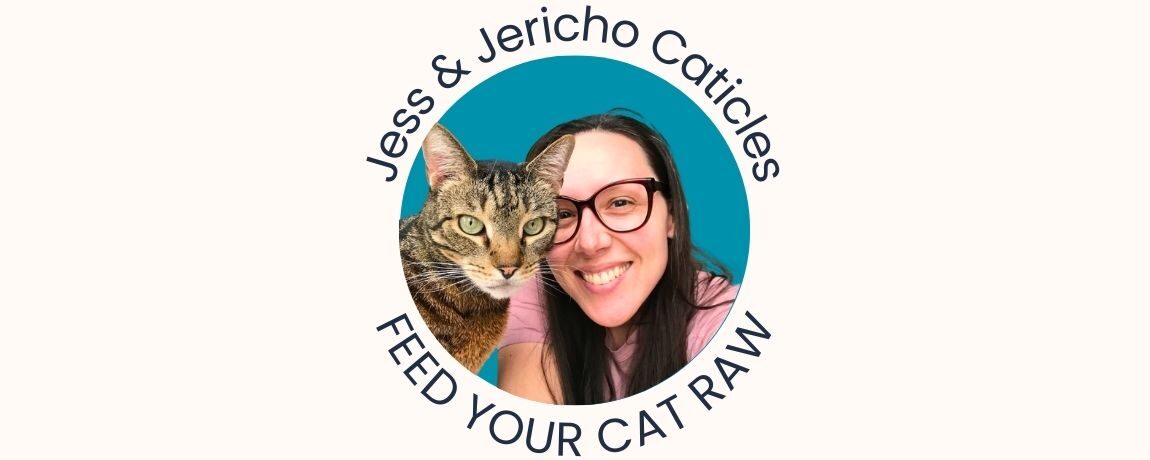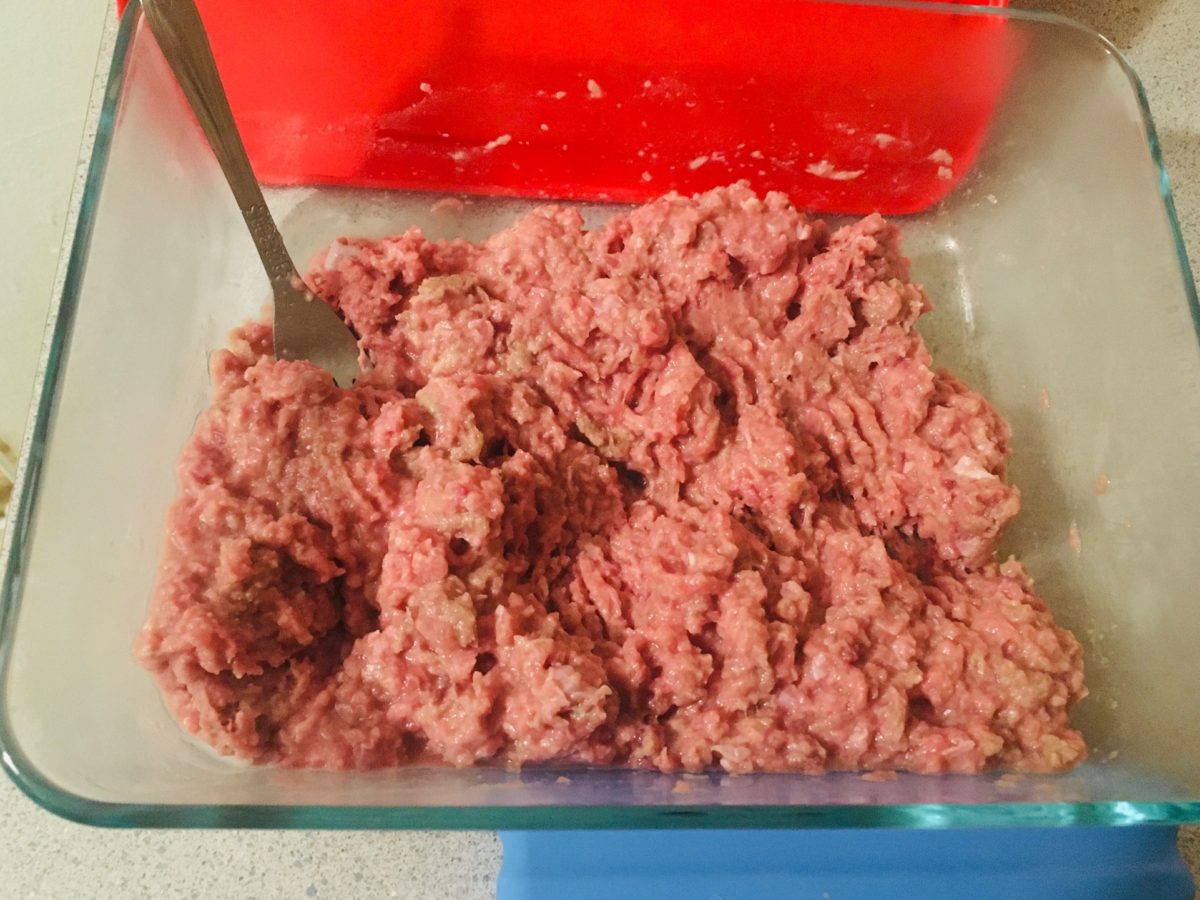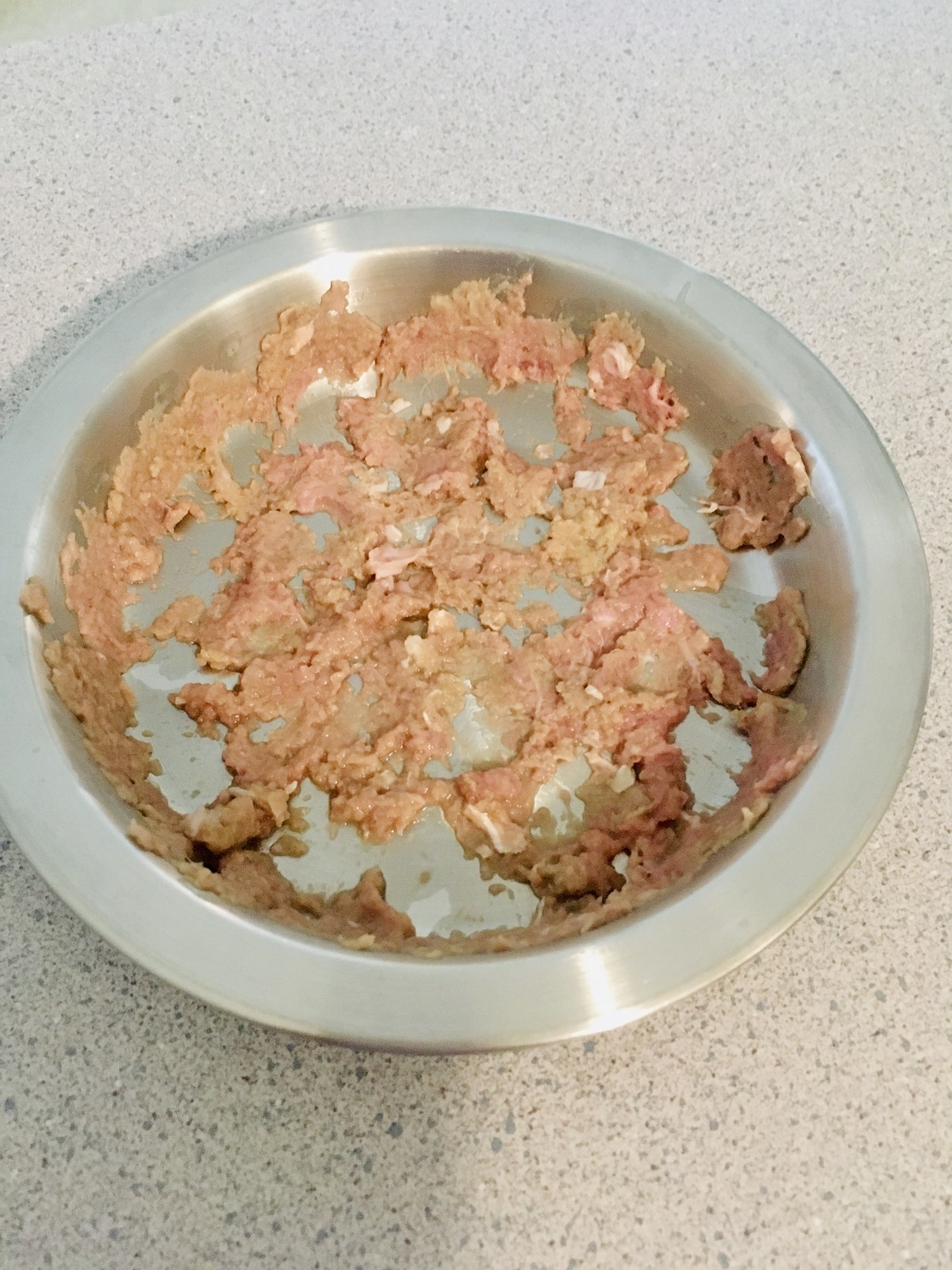I’m sure you’ve heard that cats are obligate carnivores. But what does this mean? What food do cats love?
We’ve been conditioned to believe that cat chow at the grocery store is the best nutrition for cats.
It’s “complete and balanced” and “vet-recommended”.
But do cats love it because it’s healthy or because they’re addicted?

What food do cats love?
Cats are obligate carnivores. They need nutrition only found in meat. Wild cats eat prey whole and raw. This is the most natural diet for cats. Kibble and canned foods contain mystery meats and carbohydrates. Cats love fresh food and raw meat. A raw diet is not dangerous as long as you source and handle it properly.
Cat food guide:
- Cat food cats love
- Can cats eat vegetables?
- Human foods cats can eat
- Homemade food for cats
- Foods cats can’t eat

Disclaimer: I earn a commission if you purchase through affiliate links below. No additional cost to you.
PS – If you’re ready to ditch high carb kibble for a species-appropriate raw diet, my Switch to Raw Blueprint digital magazine is for you!
My Switch to Raw Blueprint digital magazine includes my proven food transition plan, healthy treats & topper recommendations to enhance meals, best cat food brands I feed and recommend as a pet nutritionist, and so much more so you can switch your cat to a healthy premade raw diet easily and confidently.

Cat food cats love
Cats love kibble, but that’s because they’re addicted to it.
Kibble contains a high amount of carbohydrates and mystery meats.
Companies like AFB International create flavor enhancers to spray on kibble since cats are not grain- and carb-eaters by choice.
Flavor enhancers make kibble more palatable so the cat eats enough for it to be nutritious.
Cats get addicted to these flavor enhancers.
One enhancer is even referred to as “cat crack”.
Kibble is bad for cats and crunchy “dental” treats are just as bad.
I’m sure you’ve wondered what’s in cat treats that they love so much.
They’re addicted to flavor enhancers and carbs.
Carbs are also dangerous because they fuel hunger and weight gain.
Feeding dry food only puts your cat at a higher risk for serious health-related issues.
Wet canned food is much better than kibble simply because there’s more moisture.
Cats rely on food for moisture, and kibble is dangerously low.
Choose from my guide of high protein low carb wet cat food to upgrade your cat’s food. I strongly recommend learning how to read cat food labels when comparing foods.
Can cats eat vegetables?
Most vegetables will not kill your cat.
However, plants do not provide amino acids that cats need. And they contain “anti-nutritional factors, such as phytate, oxalate, goitrogens and fiber, which
reduce mineral availability (Small Animal Clinical Nutrition, page 111)”.
The only plant matter wild cats consume is the stomach content of prey. And perhaps light grazing on grasses here and there to regurgitate if necessary.
This is typically ~2% of the entire diet. Kibble, on average, is between 25-50% carbohydrates.
Veggie snacks should only make up a very small amount of your cat’s daily food intake if you decide to feed them.
Too much can offset the balance of essential nutrients. Plus, cats are designed to eat meat.
Veggies should be lightly cooked and chopped or pureed.
- Broccoli
- Carrots
- Cucumber
- Green beans
- Peas
I don’t give veggies to Jericho. He consumes raw meat, bones, and organs.
But he does eat whole prey, green tripe, and his supplements contain some plant material. These supplements are only about 1% of his diet.
He also has a fresh cat grass plant to chew on whenever he chooses.
But the veggies listed above are generally safe if you’re looking to add some fresh food to your cat’s bowl.
It’s better to have some fresh food than none.
Human foods cats can eat
Human foods that cats cat eat include meat.
Chicken, turkey, beef, duck, rabbit, quail, and lamb are all food cats love.
It is not recommended to feed pork to cats. Pork has a higher risk of pathogen contamination.
Meat should be unseasoned and raw.
Grocery store ground hamburger meat is much different than buying raw meat from a pet food supplier.
You must source your ingredients properly. Always practice safe handling to avoid contamination.
Buy your meats from your local farmer’s market, trusted butcher, or from online raw pet food suppliers. Avoid thawed pre-ground meats unless you plan to cook it.
I buy a lot from the farmers market.
But I also like to bulk order from Hare Today. Use my PDF guide for instructions and meal prep tips.
Viva Raw Pure blends are a great base for homemade cat food. Use this link for 20% off and check out my Viva Raw page for instructions. Viva Raw also has complete food for cats of all life stages.
If you’re not ready to go full into a BARF diet, you can add lightly cooked meat to your cat’s current food.
Adding some fresh food is better than none.
However, this shouldn’t be more than 10% of the total intake for the day.
Again, adding to your cat’s food will offset the balance of nutrients.
Adding lightly cooked meat and veggies to your cat’s current food may help him get used to the idea of eating fresh food.
This is a great way to transition cat food to better quality.
Homemade food for cats
Homemade cat food is the best for cats. You control the ingredients and how it’s made.
It’s important to know that cooking decreases some nutrients.
Taurine, for example, is necessary for cat health. It’s water-soluble so a lot of it will leak out during cooking.
The cat is designed to eat raw meat.
A homemade diet includes muscle meat, organs, and bones.
The goal is 83-85% muscle meat, 5-10% organs (5% must be liver), and 7-10% bones. Plus supplements to fill in the gaps.
Ratio diets are a great start. But you should also consider a whole food vitamin-mineral supplement.
Use Hare Today’s ratio calculator. And you will have to keep track of your cat’s bathroom habits to find the right ratio.
Every cat is an individual.
Muscle meat includes:
- Thigh
- Breast
- Chunks for stew
- Ground meat
Muscular organs include:
- Heart
- Lung
- Gizzard
- Green tripe
Organ meat includes (secreting):
- 5% must be liver
- Brain
- Kidney
- Eyes
- Pancreas
- Spleen
- Thymus
- Testicles
- Ovaries
Never feed cooked bones.
Raw meaty bones, however, are mother nature’s toothbrush. They are great for dental health.
Supplement options:
- Earth Animal Daily Raw Greens on Amazon and Only Natural Pet
- Rx Vitamins Cat Essentials on Amazon and Chewy
- Rx Vitamins Feline Minerals on Amazon and Chewy
- Only Natural Pet vitamins, antioxidants, probiotics, fish oil, and more
- Fish oil on Amazon and Chewy
If you’re grinding meat, it’s recommended to add nutritional supplements. TC Feline is available on Amazon for homemade diets.
Hare Today also sells pre-ground meat, bones, and organs at the correct ratio plus Alnutrin supplements and fish oil to mix in.
Any type of processing, including grinding, will inevitably lose some nutrients.
You’ll also need omega-3 and omega-6 fatty acids.
Cats need to get this from meat sources. They cannot convert plant-based fatty acids into the form they need.
Fish oil capsules are typically better than liquid in a bottle.
Polyunsaturated fats oxidize quickly and turn rancid. So it’s recommended to add the fish oil at the time of feeding.
Avoid fish liver oil since you’re adding liver to the food.
You may also try raw green tripe! Including green tripe is a great way to naturally feed your cat.
Foods cats can’t eat
There are a few human foods that cats should not eat. They are toxic and can cause serious harm to their body.
Cats cannot eat:
- Plants containing allium: onions, garlic, leeks, chives
- Citrus fruits and grapes, raisins, sultanas, currants
- Acidic foods like tomatoes
- Alcohol
- Macadamia nuts
- Chocolate
- High amounts of carbs
- Xylitol and other sugars
- Dairy
Allium
Damages the red blood cells and negatively changes blood parameters.
Symptoms include vomiting, diarrhea, abdominal pain, loss of appetite, weakness, rapid breathing, high heart rate, reddish or brown urine, and anemia.
Garlic can be therapeutic in specific amounts. But only use garlic if you’re consulting with a nutritionist or herbalist.
Fruits
Citrus fruits are dangerous to cats because they are very acidic.
They also contain limonin and volatile oils that can cause GI discomfort, vomiting, and diarrhea.
Grapes and similar fruits are more toxic to dogs. But more studies need to be completed.
It is believed that the way grapes and similar fruits are cultivated is the issue.
Alcohol
Ethanol alcohol can be found in rotten fruits, uncooked bread and pizza dough, paints, medications, perfume and cologne, mouthwash, and some antifreeze.
Alcohol is quickly absorbed and reaches the brain.
Symptoms include depression, loss of coordination, sedation, increased body temperature, lethargy, slow breathing, and coma.
Macadamia nuts
These are also more poisonous to dogs, but not many studies have been done for cats. It’s best to avoid ingestion.
Symptoms include weakness, vomiting, trembling, fever, abdominal pain, pale mucous membranes, and stiffness or loss of coordination.
Chocolate
Naturally occurring caffeine and theobromine in chocolate can be toxic.
Both stimulate the central nervous system and heart muscle. The stimulants also relax muscles and increase the production of urine by the kidneys.
Again, not much research has been done for cats. But it’s best to avoid it.
Carbs
Cats need meat to survive, and they cannot utilize carbs.
Wild cats consume the stomach content of prey which is only about 2% carbohydrates.
Kibble is typically 25-50% carbohydrates.
Carbohydrates make cats feel hungry all the time, and they will gain unnecessary weight.
Carbs are also dangerous to cats because they lower the acidity of the stomach. The cat needs a highly acidic stomach to fight bacteria and pathogens.
Even if you’re not feeding a raw diet, your cat will still consume bacteria.
Your cat licks his butt after he poops.
And kibble and canned foods can still contain bacteria and pathogens. There have been far more kibble recalls for bacteria than raw food.
Sugar
Sugar is dangerous to cats because they cannot utilize it. The body must produce extra insulin to store sugar.
Extra insulin can create resistance and diabetes. Excess sugar is stored in the body as fat.
Xylitol is a sugar alcohol used to sweeten human foods. It’s also found in health and beauty products, over-the-counter drugs, supplements, and prescription medications.
There is a higher risk of poisoning for dogs. But it should be avoided with cats as well.
Dairy
Most cats are lactose intolerant. Kittens can digest mother’s milk, but that’s where it ends.
Excessive milk ingestion may cause vomiting and diarrhea.
However, adding some raw goat milk or colostrum to the diet can be beneficial. These two dairies have much less lactose than cow milk.
Final thoughts on food cats love
Cats were born to consume whole prey raw. The best diet for cats is a fresh diet.
Cats love kibble because they’re addicted to it. Kibble is high in carbs so manufacturers spray flavor enhancers on it to entice your cat to eat it.
Your cat is much better on a fresh, raw muscle meat, organs, and bones diet.
Get ingredients from sources you can trust. Handle meats properly to avoid contamination.
Steer clear of human foods like certain plants, nuts, chocolate, alcohol, dairy, sugar, and carbs.
Stick to animal ingredients plus whole food supplements, and your cat will be happy.
Ready to switch to raw for a happier cat?
Grab my Switch to Raw Blueprint digital magazine and get the same plan that 564+ cat parents used to switch to a healthy premade raw diet easily and confidently.



